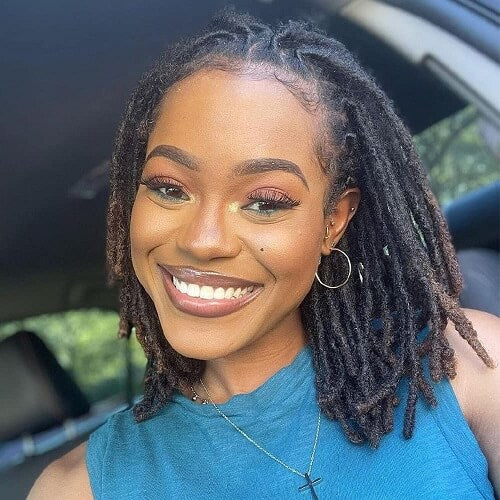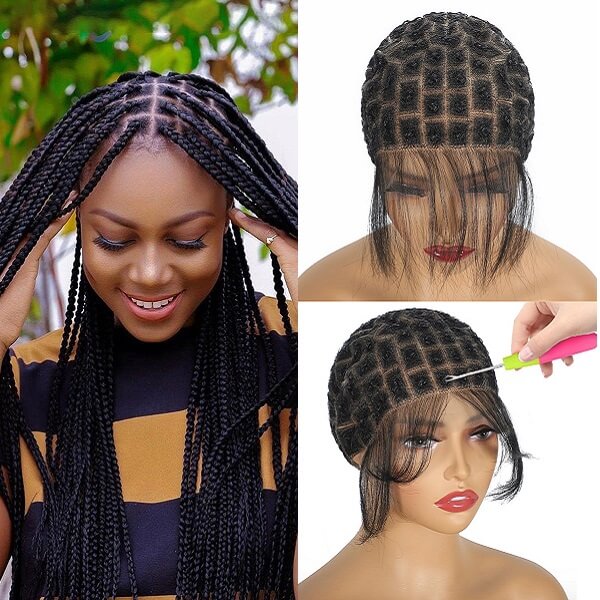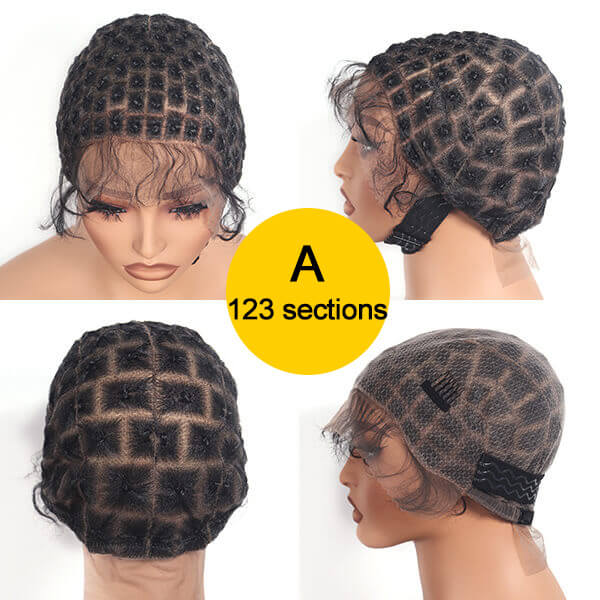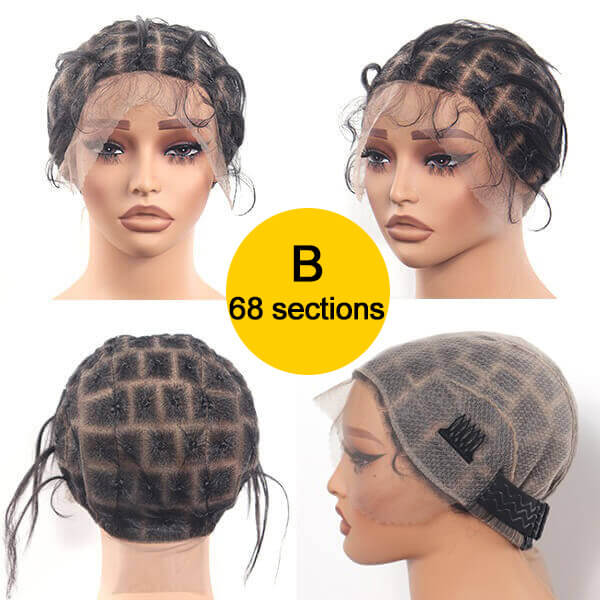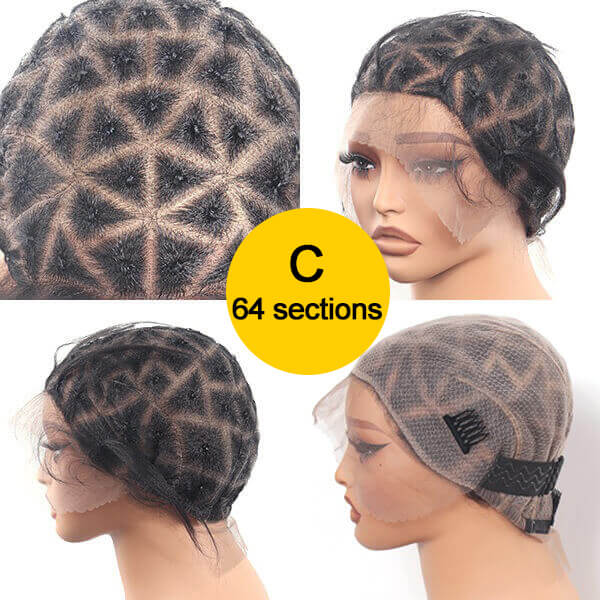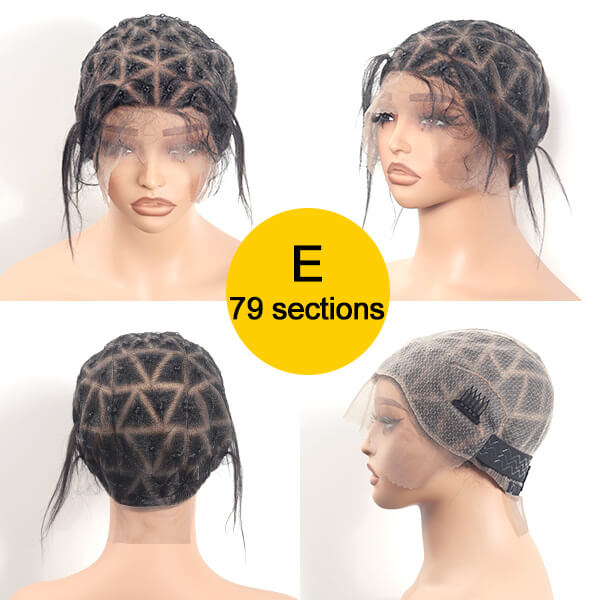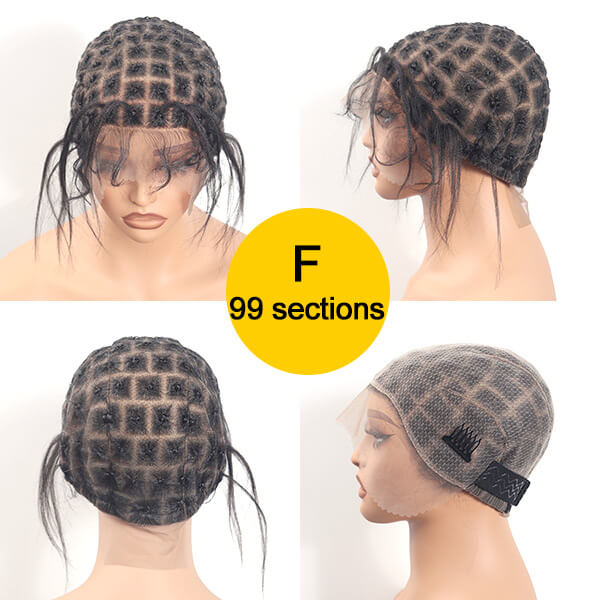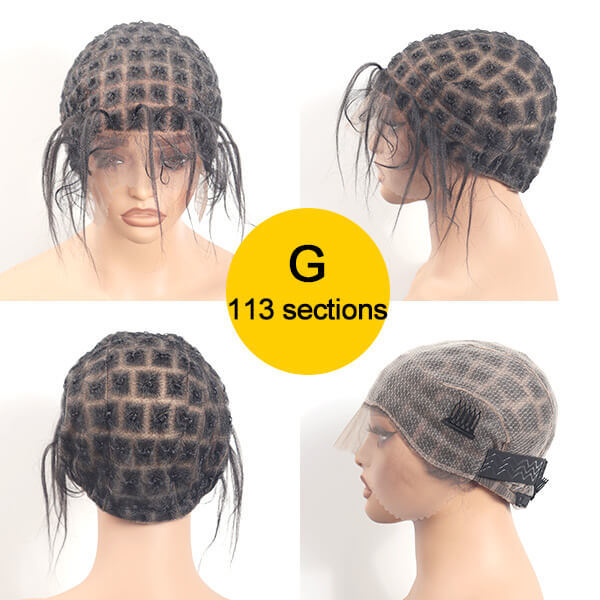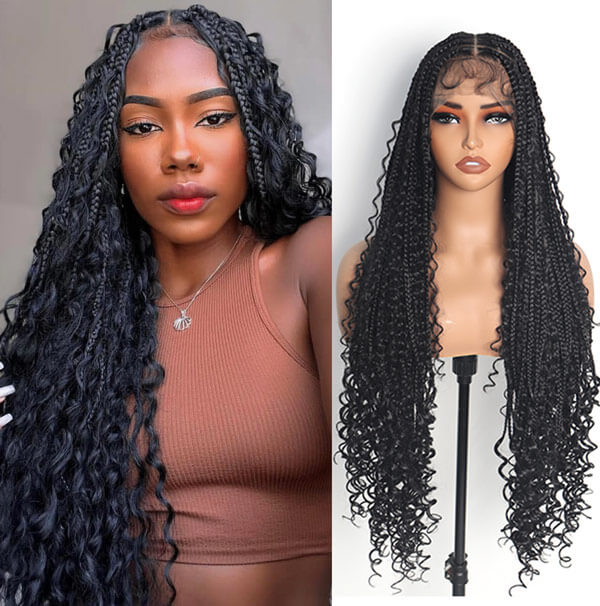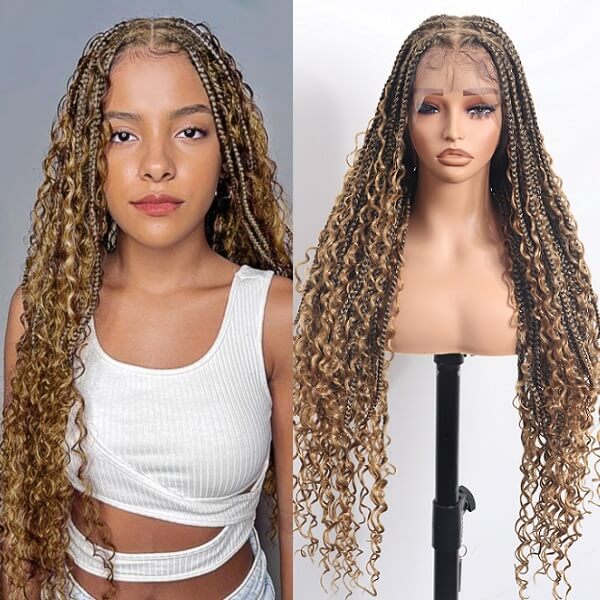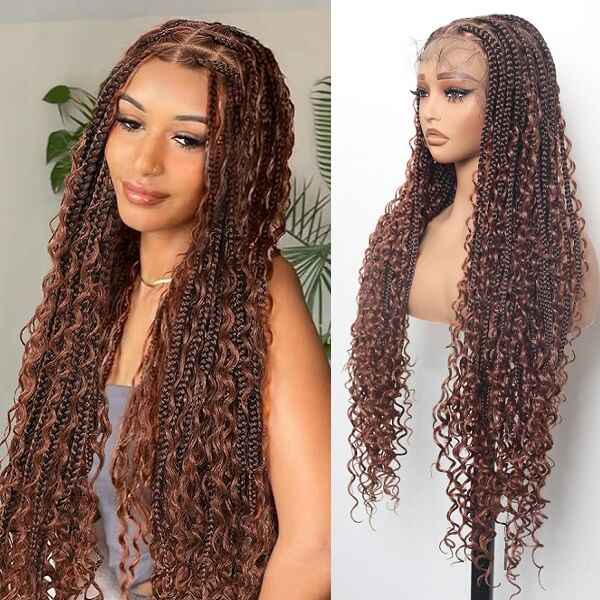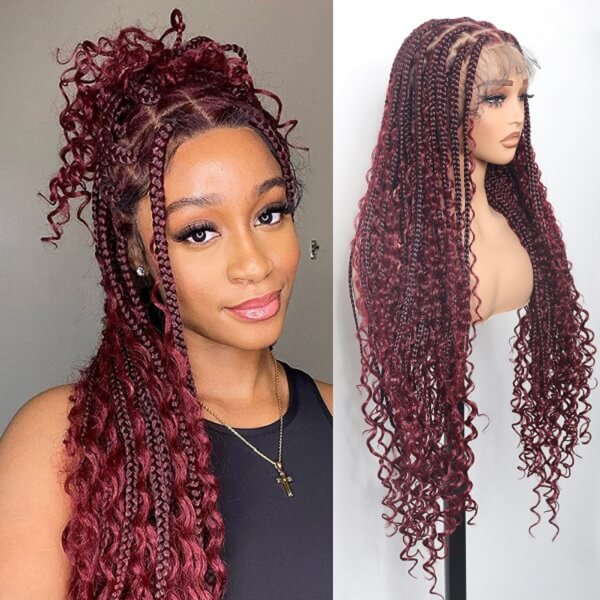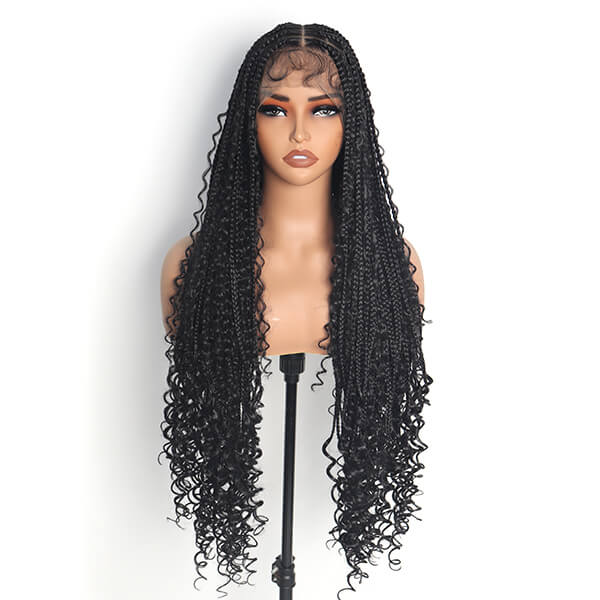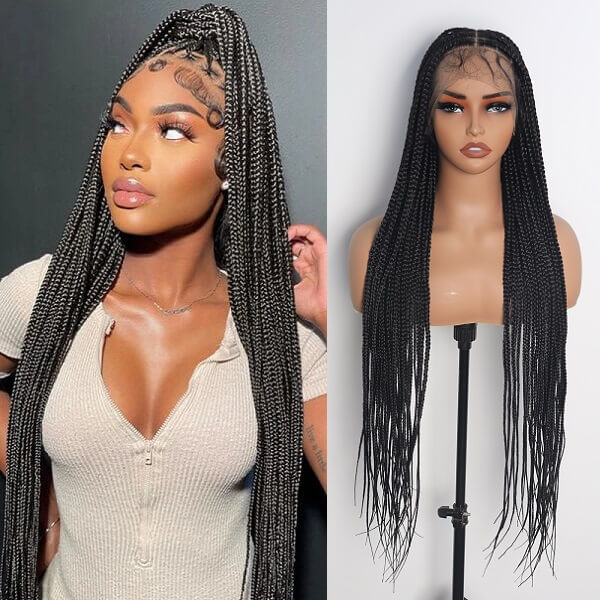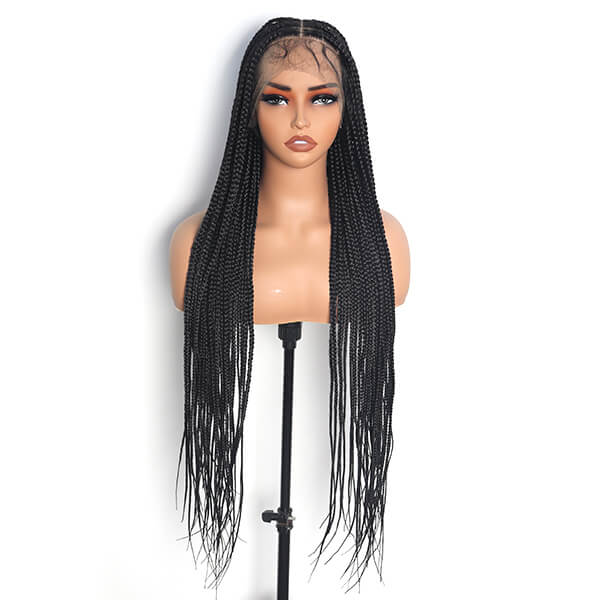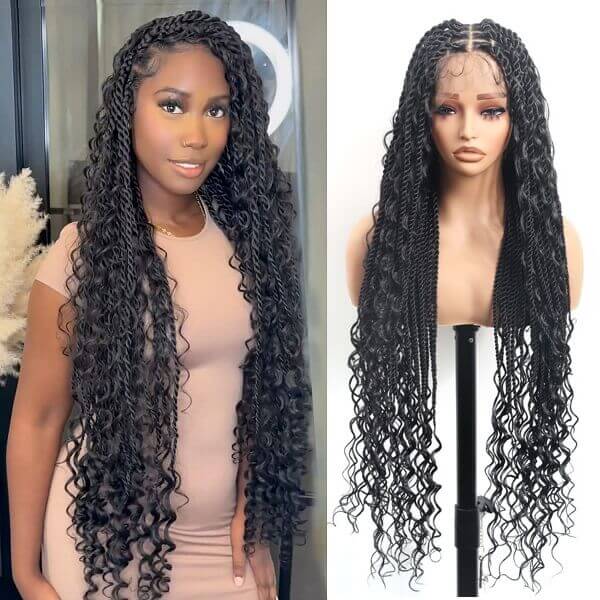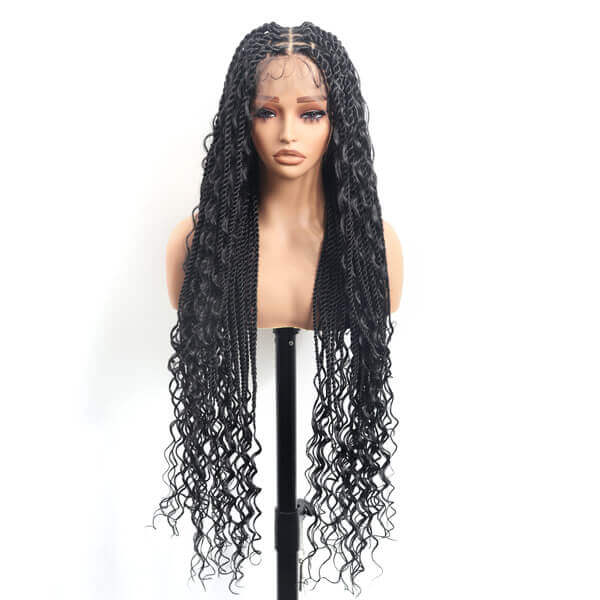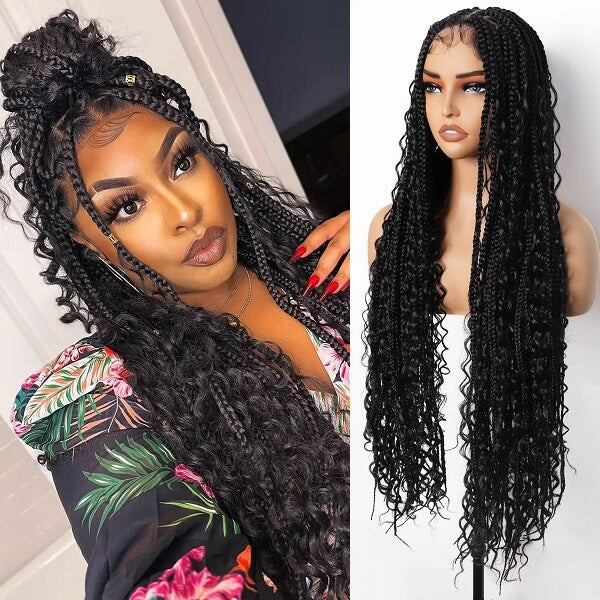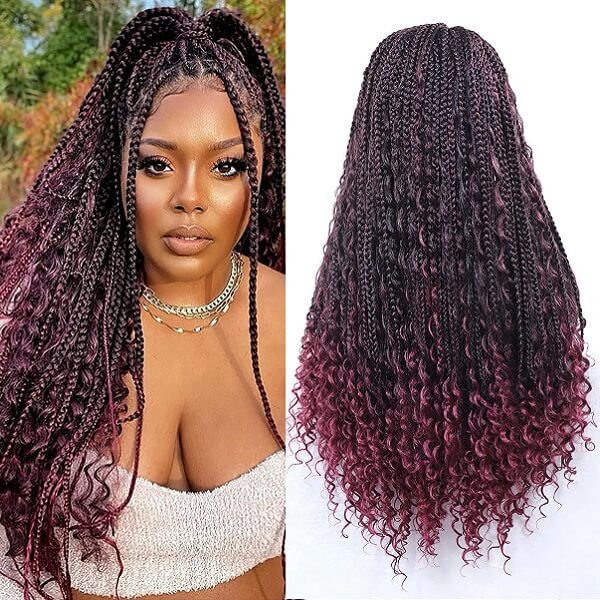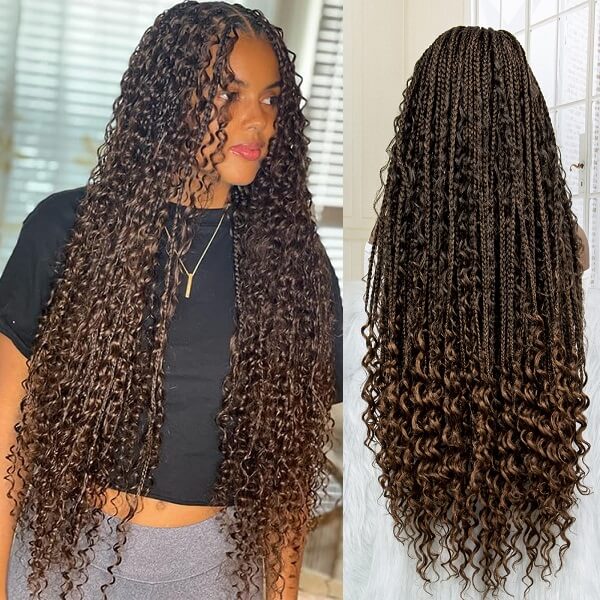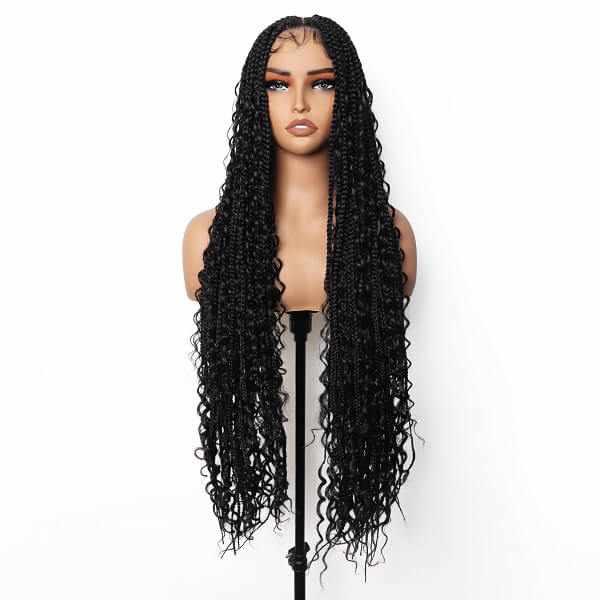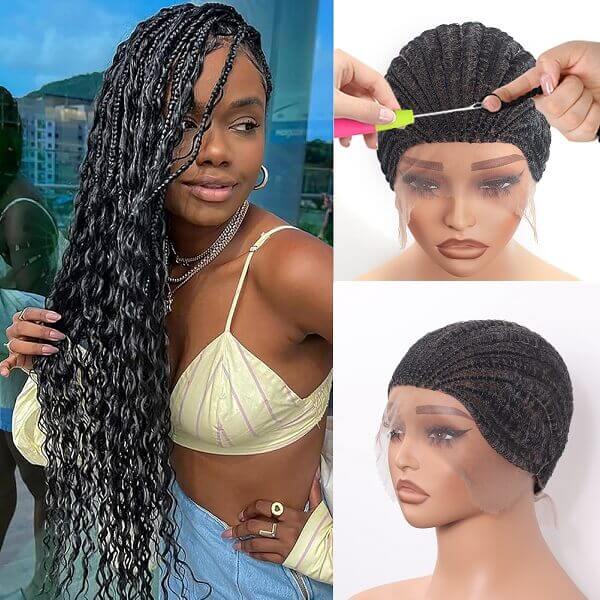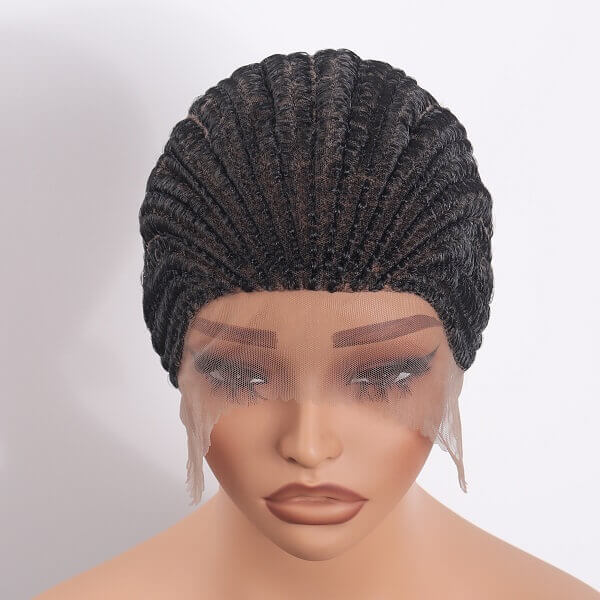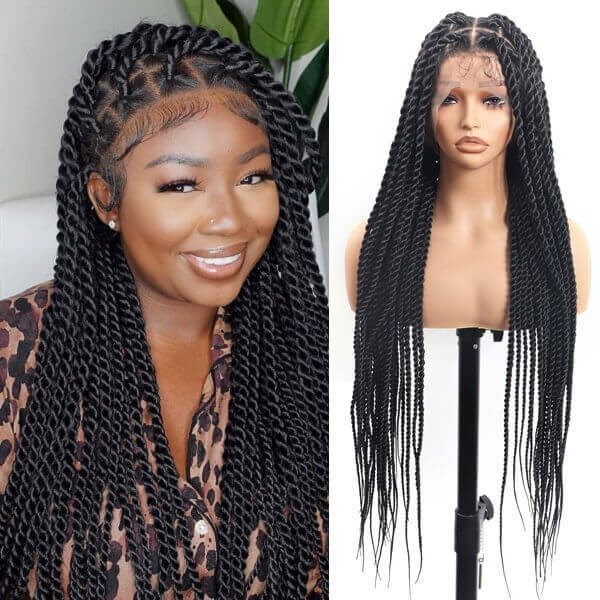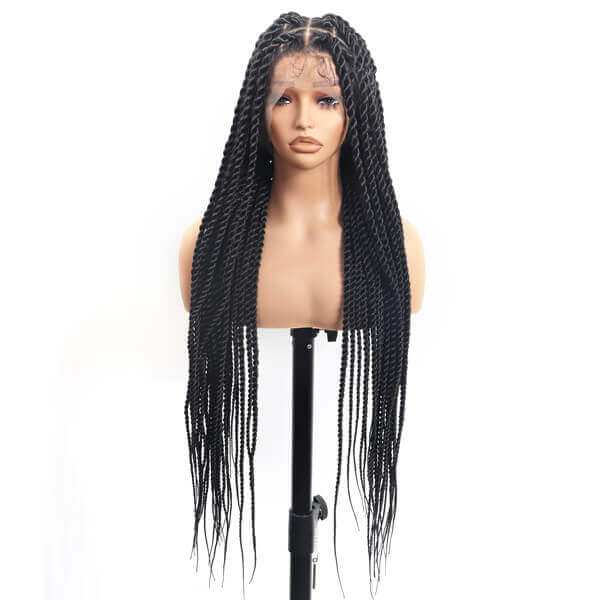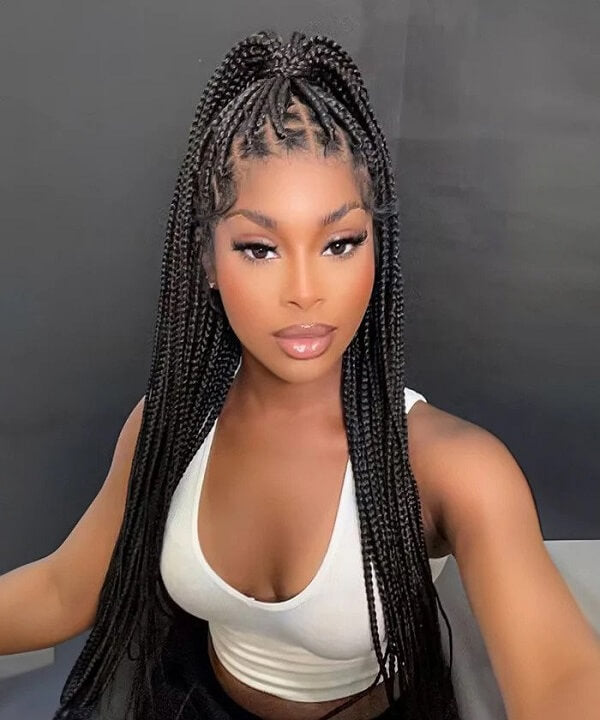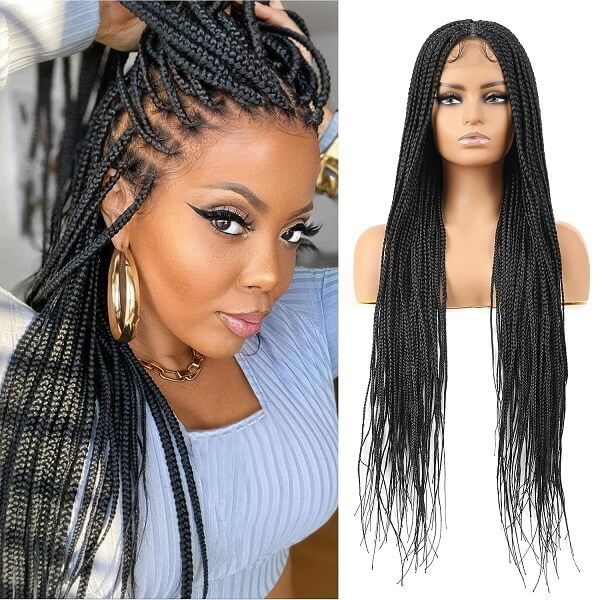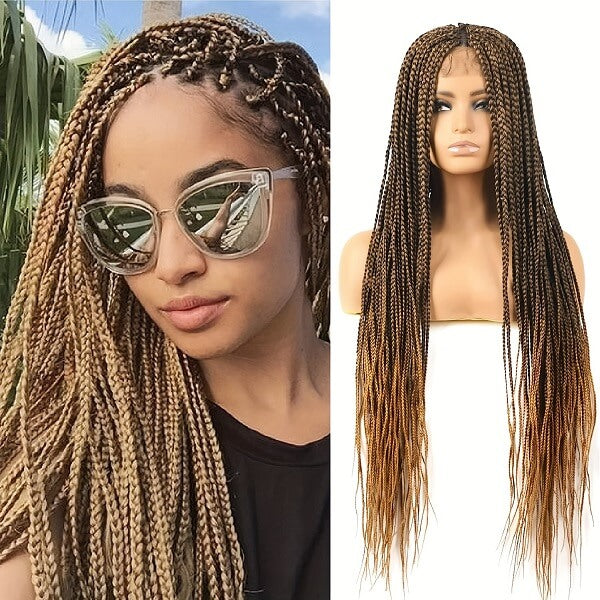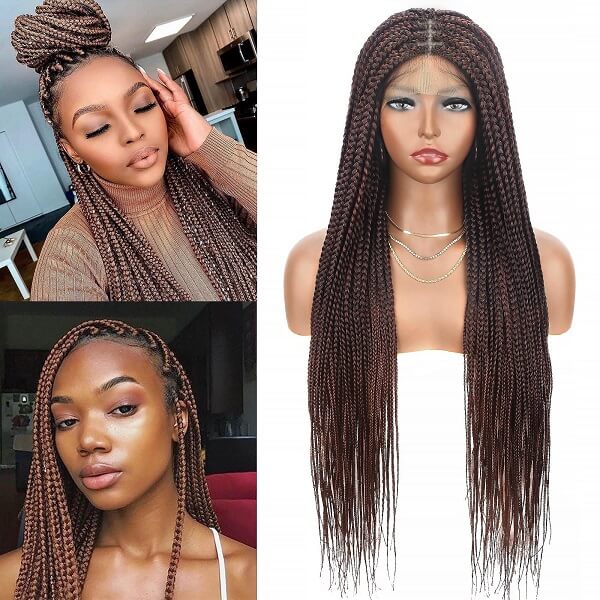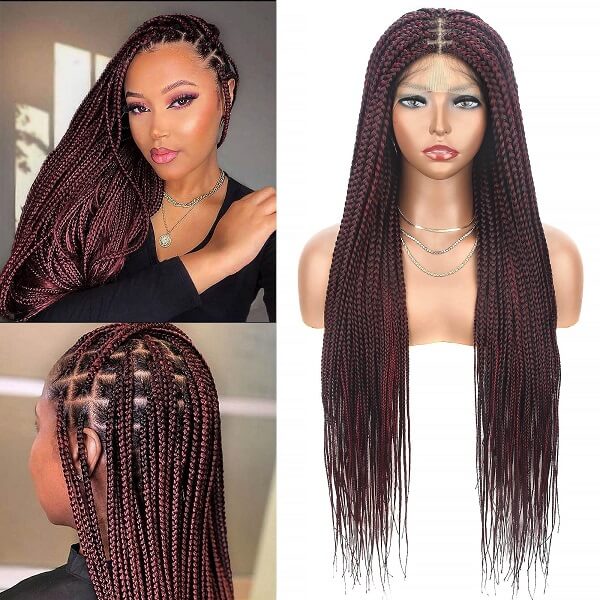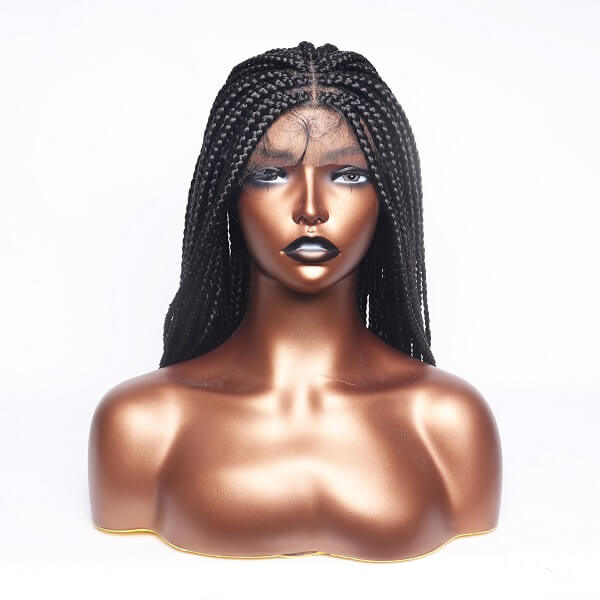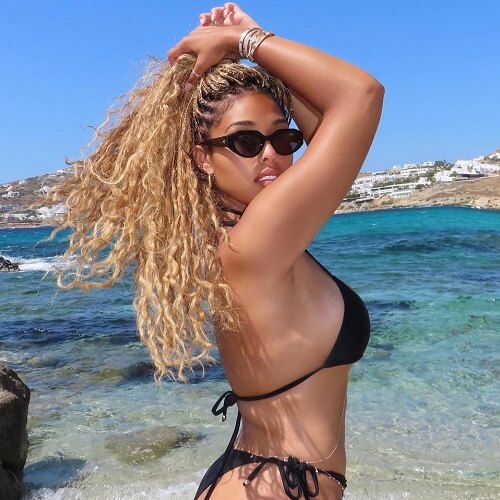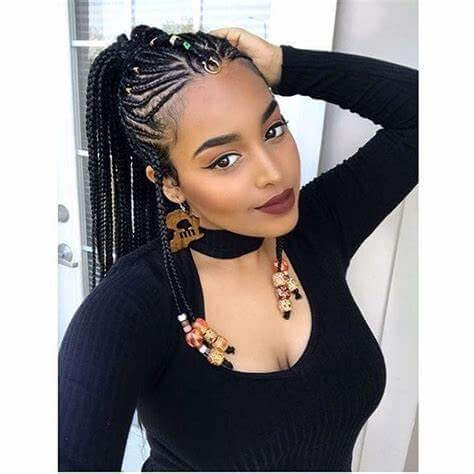Locs, also known as dreadlocks, dreads, or locks, are more than just a hairstyle—they are a cultural symbol and a personal style statement. Originating from various cultures around the world, locs have a rich history and deep cultural significance. Today, locs are celebrated for their versatility, beauty, and the sense of identity they provide to those who wear them.
In this comprehensive guide, we will explore the different types of locks available, each with its unique characteristics, methods of creation, and maintenance routines. Whether you're considering starting your loc journey or simply curious about the different styles, this article will provide you with the information you need. Keep scrolling!

6 Easy Methods to Create Locs
Creating locs can be achieved through various techniques, each offering a unique approach to forming and maintaining the locs. Here are some common methods:
1. Twisting
- Two-Strand Twists
This method involves dividing the hair into sections and twisting two strands of hair around each other. Over time, the twists will lock together to form locs. This technique is popular for its simplicity and effectiveness, especially for those with coarser hair types.
- Comb Twists
Using a small-tooth comb, the hair is twisted into small coils. This method is ideal for shorter hair and provides a neat, uniform appearance. Regular maintenance is required to help the twists lock into locs.
2. Palm Rolling
Palm rolling is a common method for maintaining and tightening locs. The hair is rolled between the palms of the hands, encouraging the strands to lock together. This technique is suitable for both starting and maintaining locs, providing a neat and uniform look.
3. Interlocking
Interlocking, also known as latch hooking, involves pulling the end of the loc through the root with a special tool. This method creates a tighter and more secure loc, making it ideal for fine or loose hair textures. Interlocking can be done at home or by a professional.
4. Backcombing
Backcombing, also known as teasing, involves combing the hair backward toward the scalp to create tangles. These tangles are then rolled and compacted into locs. This method is commonly used for starting locs on straight or wavy hair.
5. Freeforming
Freeforming, or neglect method, allows the hair to lock naturally without manipulation. The hair is simply washed and left to tangle and mat over time. This method results in a more organic and varied appearance, with locs forming in their own unique shapes and sizes.
6. Crochet Method
The crochet method involves using a crochet hook to pull loose hair into a pre-formed loc. This technique can be used to create new locs or to maintain existing ones, providing a neat and polished look. It’s especially effective for creating faux locs and temporary styles.
Popular Types of Locs
1. Traditional Locs

Traditional locs, also known as classic locs, are medium to large-sized locs (5-14 mm, pencil width to nickle width) that cannot be flat ironed or hot curled due to their thickness. Instead, those who wear traditional locs can achieve curls using rollers or Bantu knots.
- How to Achieve and Maintain Traditional Locs
Starting traditional locs can be done through various methods, including twisting, palm rolling, or backcombing. The choice of method depends on your hair type and personal preference. Once the locs are formed, maintenance involves regular washing, conditioning, and re-twisting the roots to keep the locs neat and tidy.
- Benefits and Styling Options
- Easier to Find Hairstylists: Traditional locs are familiar to many hairstylists, making it easy to find professional help for starting, maintaining, and styling your locs.
- Easier to Retwist: Retwisting traditional locs is simple and quick, thanks to their medium to large size. This makes home maintenance manageable, even for beginners.
- Flexible Maintenance: You can start and maintain traditional locs with or without a stylist. This flexibility allows you to choose between professional services and DIY care, fitting your lifestyle and budget.
- Option to Freeform Later: Traditional locs can transition to freeform locs if you want a more natural look. Freeforming lets your locs develop organically without regular retwisting.
2. Sisterlocks

Sisterlocks are the smallest-sized loc types, where the diameter is 2-3 mm. They were created by Dr. JoAnne Cornwell in 1993 as a way to offer women with textured hair a versatile and elegant loc option. Due to their small size, with an average of 400 locs installed by a consultant, Sisterlocks can be quite expensive, typically ranging from $850 to $1000.
- The Installation Process and Maintenance Requirements
The installation of Sisterlocks is a meticulous process that can take more than 10 hours to 2 days, depending on the length and density of the hair. The hair is divided into small sections and interlocked using a special tool, creating tiny, uniform locs. Maintenance involves regular retightening sessions every 4-6 weeks to keep the locs neat and prevent them from unraveling.
- Advantages and Popular Styles
- Versatile in styling: Sisterlocks offer numerous styling options due to their small size and resemble appearance of natural hair.
- Can be flat-ironed or hot-curled: They can be curled, braided, or worn in intricate updos.
- Lightweight and bring less tension: One of the main advantages of Sisterlocks is that they are lightweight and less prone to tension-related issues compared to larger locs.
3. Freeform Locs

Freeform locs, also known as freeform dreadlocks, are formed naturally without any manipulation. The hair is allowed to mat and knot on its own, creating locs of varying sizes and shapes. This method embraces the natural texture and growth pattern of the hair, resulting in an individualized look and thick locs.
- Tips for Embracing and Maintaining Freeform Locs
Embracing freeform locs requires patience and a willingness to let go of control over the hair's appearance. Regular washing and conditioning are essential to keep the scalp clean and healthy. It's important to avoid over-manipulating the hair to allow the locs to form naturally. Wearing a satin or silk scarf at night can help reduce friction and prevent unnecessary breakage.
- Pros and Cons of Freeform Locs
Pros: Freeform locs offer a low-maintenance option for those who prefer a more natural look. They are less time-consuming to start and maintain compared to other types of locs. And they don't need to be retwisted, just natural form.
Cons: Freeform locs can take longer to mature and may result in an uneven appearance. They also require a certain level of confidence to embrace the natural, untamed look.
4. Interlocking Locs

Interlocked locs, also known as latch-hook locs, are created using a technique that involves pulling the ends of the hair through the roots using a latch-hook tool. This method creates a secure and uniform loc, making it an ideal option for those with fine or loose-textured hair.
- Maintenance Routine and Styling Versatility
Interlocked locs require regular maintenance to keep them neat and prevent them from unraveling. The roots need to be retightened every 6-8 weeks, depending on the hair's growth rate. Interlocked locs can be styled in various ways, including updos, buns, and braids, offering plenty of versatility.
- Benefits of Choosing Interlocked Locs
One of the main benefits of interlocked locs is their durability. The interlocking method creates a strong foundation, making the locs less prone to breakage. They also provide a neat and uniform appearance, which can be appealing for those who prefer a more polished look. Additionally, interlocked locs are less likely to trap debris and dirt, making them easier to keep clean.
5. Microlocs

Microlocs are a smaller version of traditional locs, where the loc diameter is 2-3 mm like sisterlocks, offering a delicate and intricate appearance. They are ideal for those who want the look of locs without the bulkiness of larger locs. Microlocs are versatile and can be styled in numerous ways, similar to Sisterlocks but with a more do-it-yourself approach.
- Installation Process and Upkeep
The installation of microlocs can be done using various methods, including twisting, braiding, or interlocking. The process can take several hours to a few days, depending on the hair's length and density. Maintenance involves regular retightening sessions every 4-6 weeks to keep the locs neat and prevent them from unraveling.
- Popular Microloc Styles and Benefits
1. Versatile in styling: Microlocs resemble the appearance of loose hair, offering a wide range of styling options, from updos to intricate braids and curls. yes, they can be flat-ironed or hot-cured.
2. Lightweight and bring less tension: They are lightweight and less prone to tension-related issues compared to larger locs.
3. Do not require a stylist: Different from the sister locs, micro locs offer a do-it-yourself approach.
6. Faux Locs

Faux locs are a temporary alternative to traditional locs, created by wrapping synthetic or human hair extensions around the natural hair. This method allows for the look of locs without the long-term commitment. Faux locs can be worn for a few weeks to a few months, depending on the maintenance routine.
- Different Methods of Creating Faux Locs
There are several methods to create faux locs, including crochet, wrapping, and braiding. The crochet method involves using a crochet hook to attach the extensions to the natural hair. The wrapping method involves wrapping the extensions around the natural hair to create the appearance of locs. Both methods offer different textures and appearances, allowing for customization.
- Advantages and Styling Possibilities
Faux locs offer a great way to experiment with the look of locs without the long-term commitment. They can be styled in various ways, including updos, buns, and braids. Faux locs also provide a protective style, helping to prevent damage to the natural hair. They are available in a variety of colors and lengths, allowing for endless styling possibilities.
7. Wavy Locs

Wavy locs are a type of loc style that incorporates waves or curls into the locs, creating a textured and voluminous appearance. This style can be achieved using various techniques, including braiding, twisting, or curling the locs.
- Techniques to Achieve Wavy Locs
To achieve wavy locs, the hair can be braided or twisted while wet and then allowed to dry. Once the braids or twists are undone, the locs will have a wavy or curly appearance. Curling tools or perm rods can also be used to create waves or curls in the locs. Regular maintenance is required to keep the waves or curls intact.
- Maintenance Tips and Styling Ideas
Wavy locs require regular moisturizing to keep them hydrated and prevent frizz. It's important to use a lightweight oil or leave-in conditioner to maintain the waves or curls. Wavy locs can be styled in various ways, including updos, half-up styles, and ponytails, offering plenty of versatility.
8. Crochet Locs

Crochet locs are created using a crochet hook to attach pre-made loc extensions to the natural hair. This method is quick and easy, making it a popular choice for those looking to achieve the look of locs without the long-term commitment.
- Maintenance and Styling Tips for Crochet Locs
Crochet locs require regular maintenance to keep them looking fresh and prevent them from unraveling. The roots need to be retightened every 6-8 weeks, depending on the hair's growth rate. Crochet locs can be styled in various ways, including updos, buns, and braids, offering plenty of versatility.
- Advantages of Crochet Locs
Quick and easy to install: One of the main benefits of crochet locs is their ease of installation. The crochet method is quick and less time-consuming compared to other methods of creating locs.
Lightweight: Crochet locs are also lightweight and less prone to tension-related issues, making them a comfortable option for those with fine or sensitive hair.
Temporary Option: Ideal for those who want the look of locs without a long-term commitment.
9. Goddess Locs

Goddess locs are a type of loc style that incorporates curly or wavy ends, creating a bohemian and ethereal appearance. This style is achieved by adding curly or wavy hair extensions to the ends of the locs, giving them a textured and voluminous look.
- How to Achieve and Maintain Goddess Locs
To achieve goddess locs, the hair is sectioned and wrapped with curly or wavy hair extensions. The ends of the locs are left loose to create the desired look. Maintenance involves regular moisturizing to keep the locs hydrated and prevent frizz. It's important to use a lightweight oil or leave-in conditioner to maintain the curls or waves.
- Benefits and Styling Options
Boho flair: Goddess locs offer a unique and eye-catching style that is perfect for those looking to embrace a bohemian look.
Versatile in styling: They can be styled in various ways, including updos, half-up styles, and ponytails. They are available in a variety of colors and lengths, allowing for endless styling possibilities.
Protective hairstyle for black women: Goddess locs are also a great protective style, helping to prevent damage to the natural hair.
Conclusion
In conclusion, locs are a versatile and beautiful hairstyle with deep cultural significance. From traditional locs to Sisterlocks, freeform locs to goddess locs, there is a loc style for everyone. Each type of loc offers its unique characteristics, benefits, and styling possibilities, allowing you to choose the one that best suits your preferences and lifestyle.
If you're considering starting your loc journey or looking for a new loc style, explore the variety of braided wigs available at mybraidedwig.com. Our premium quality locs braided wigs offer the perfect solution for those who want the look of locs without the long-term commitment. Embrace your unique style with the perfect braided wigs from mybraidedwig.com.
Visit mybraidedwig.com today to discover our wide range of braided wigs, including loc styles. Our high-quality braided wigs are made of high-quality Japan-made fiber, and hand-crafted by experienced braiders. Explore our locs wigs collection and find the perfect wig to elevate your charm and confidence.
Related Articles:
Knotless Braids Vs. Knot Braids
50 Stunning Knotless Braids Hairstyles You Need to Try!
Why Do Black Women Wear Braided Wigs?

